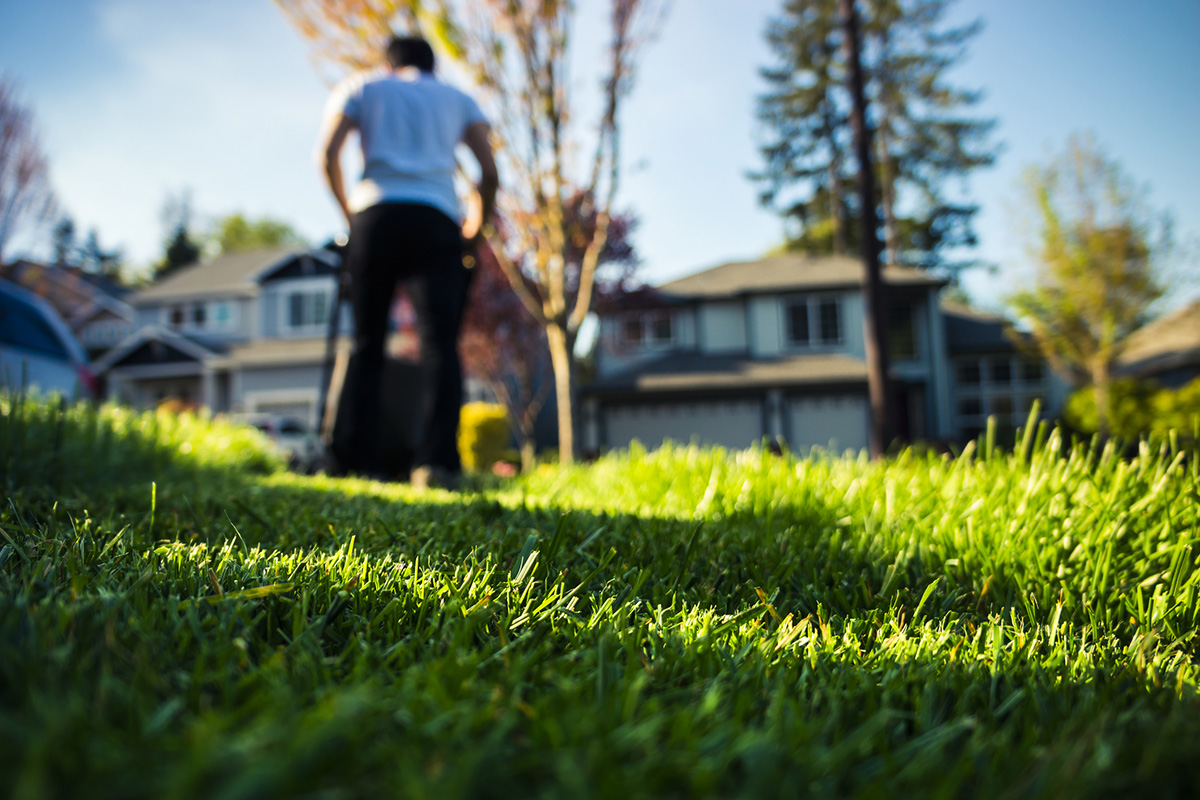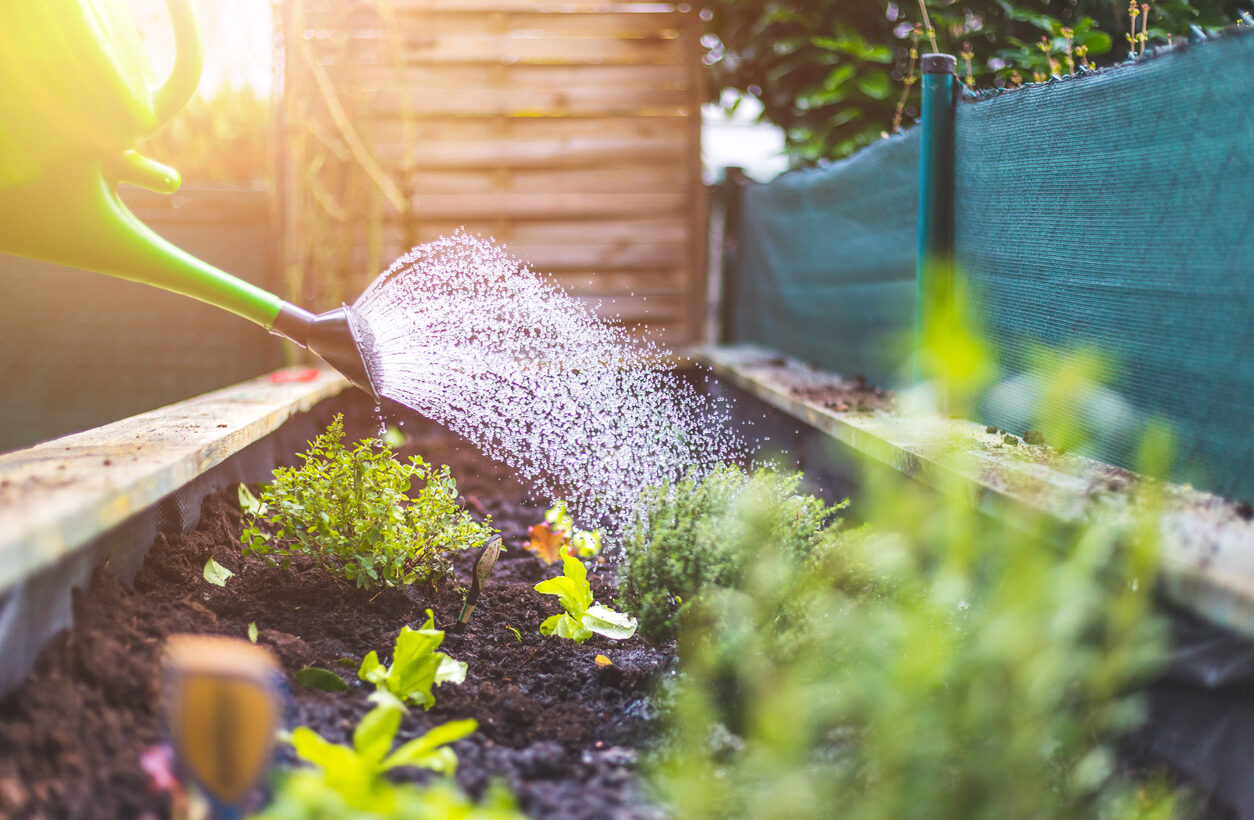By Sally Cunningham
_________________________________
In our April issue we addressed the rapid and extreme weather changes that are typical in our region. Many of the same warnings are valid in May and early June:
- There can be shocking frosty nights, when you must take inside or protect tender annuals and tropical plants—your Mother’s Day basket for instance.
- There can be series of rainy days, leaving soil so soggy that you should not be walking on it, or tilling, or planting in it. Work in the garden only when a handful of soil crumbles in your hands (rather than forming a mud pie).
- On the other side of weather possibilities, we could experience an extended period of heat and no rain, which could threaten your gardening efforts: New seedlings as well as new lawns need frequent water because their roots are so shallow. Also, landscape plants you put in last year also have small roots sytems, so they need regular, deep watering through spring and summer, as their roots begin to reach out.
But enough about risks and warnings. Starting in May, we really are at the beginning of the gardening season. Here comes your To Do list.
_________________________________
In all garden and landscape areas
- Keep digging, pulling, or smothering weeds. A handful of garlic mustard, bishop’s weed (goutweed), or bedstraw–pulled, dug, and discarded* now– prevents them from multiplying a thousand-fold. (*While composting is great for most organic matter, certain weeds like these are very resilient, so I recommend putting them into a garbage bag.)
- Re-establish edges and paths. During the time you can’t walk on wet soil, you can make a huge visual improvement by digging and cleaning up edges and clearing or establishing paths. Your choice: wood chips, straw, gravel, grass, flagstones, or pavers make fine paths. Whether you or a landscaper is the path-maker, be sure to do the proper preparation for a stone, gravel, or paver path–leveling, gravel base, etc.
In the perennial and bulb beds
- Cut back any remaining debris from last season, while watching carefully where you step.
- Allow time for late-emerging perennials to emerge. Some poke upward as as late as the first weeks in June. Late arrivals include hardy hibiscus, balloon-flowers, butterfly weed (Asclepias tuberosa) , and several kinds of hostas. Don’t walk on them or plant over them when they’re planning to come back soon.
- Cut off the stems and flowers from bulb plants as they stop looking pretty, but let the leaves keep growing. In order to fortify the bulb for next year, the leaves must have some weeks to take in some sunshine. They benefit from a bulb-booster kind of fertilizer at this time.
- You may divide and replant perennials as soon as the soil is ready to work—if you are sure of their size and spread. You may also buy and plant new perennials if they have been hardened off (left outside to adjust to cold nights) for a few weeks in the garden center. Otherwise, wait.
_________________________________
How much space does a plant really need?
Plant buyers, including experienced gardeners, often make a mistake by under-estimating the future height and width of a plant. In part, this is because we believe our eyes, and don’t take the plant label (or research info) seriously. In the case of perennials, if the label says “Size: 2 feet high x 4 feet wide at maturity”—believe it. This is difficult when the little plant is in a 4-inch pot, looking meek and mild-mannered. If you see the word “spreads”, believe it and use it where a ground-covering is desired.
In the case of woody plants (trees or shrubs) it is even more important to heed the “mature size” information. It is nearly impossible later to transplant a 10=foot arborvitae (now 4-feet wide), or a cute Japanese maple that you planted 4 feet from the house—but now it is 14 feet tall and 8 feet wide.
Whether you are transplanting or planting, leave room for that plant’s life in five, ten, and twenty years. While it’s growing up, plant annuals or smaller plants near it.
_________________________________
In the vegetable garden
– If the soil is crumbly and well-drained in your raised or flat garden beds, you are ready for cool-season crops. Plant lettuces, spinach, broccoli, Brussels sprouts, kale, Swiss chard, and other green leafy vegetables. In well-drained soil, plant potatoes. It is almost too late to plant peas—but try some.
It is too soon to plant warm-season vegetables such as tomatoes, eggplants, peppers, squash, and beans—until the soil feels warm (past 70 degrees) in your hand. (In all cases, read Time of Planting, or temperature requirements on plant labels and packets. Many vegetable gardening books for the Northeast provide timing advice for food gardens.
– If your garden bed will remain fallow this season, for a rest period for you or for the soil, plant the bare areas with a cover-crop such as buckwheat, clover, or another cover crop seed mix from a farm store. Cover crops replenish the soil when they are turned under at the end of the season. You may also cover bare areas with black plastic or straw. Just don’t let bare areas stay bare or weeds will take over.
Garden planning and landscape shopping 101
The weather is giving us the urge to buy and plant—it’s gardening season at last. Where to start?
Site analysis Professionals take extensive training in order to analyze potential sites for new plantings. Ideally, they know soil type and pH, the hardiness zone, the amount of sun exposure, wind, animal predators in the area, drainage, rainfall, and availablity of water. They figure out all that, before they recommend what trees, shrubs, perennials, vines, and turfgrass to use there.
But it’s garden center time! And what do regular humans do usually? We fall in love with the look of a tree or flowering perennial in the nursery or garden center. And we buy it, figuring that there must be a good place for it around our home.
That is not the way to do it. Two smarter ways to manage the falling-in-love moment:
1 –Do your own site analysis, like a pro, so you are ready when you go shopping. On each side of your home, where you might potentially grow plants, make notes about the sun, wind, and other factors. Get a soil test done from Cornell Cooperative Extension or your landscaper (especially pH). Dig a hole to see how fast or slowly the water drains. Measure the width and length of planting areas, starting a couple feet from the house, since you always need to leave space behind your “foundation beds.” Know which sides of your house face East, South, West, and North, since that affects the sunshine/shade, and wind. Look at your house from the road, and look out the windows, as you think about what kind of woody plants and garden beds you want to see and what you want others to see. Keep these notes (and pictures) in your car.
2 – Use a camera: When you do see an irresistible shrub or other plant, take a picture of it and the label—with full genus, species, and cultivar names. Look it up, using science-based online sources (universities, or state listings) or books. The common name is not enough to tell you how big that plant will get. The Latin name, including the cultivar names (in single quotation marks) tell you about the true size, behaior, and needs of the plant. Talk to true garden center professionals who know the plants. Just don’t put a Juniper in full shade, or an Arborvitae where the deer walk by. It’s all about location, location, location (and then god planting and care.)
If the plant matches your site, then go for it!
Happy spring at last–
_________________________________


